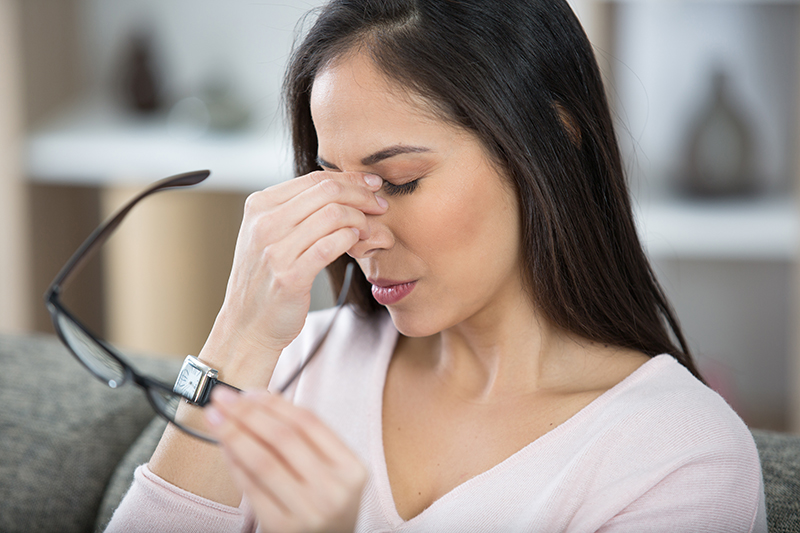Fuchs’ Dystrophy
Fuchs’ dystrophy is a condition in which cells lining the inner surface of the cornea slowly begin to die off. These cells, called endothelial cells, pump excess fluid out of the cornea.
As more and more cells are diminished, fluid begins to build up in the cornea causing swelling and clouding of the cornea tissue.
The condition is progressive and changes that occur in the cornea can cause scarring and interfere with vision. Small blisters may form on the cornea as the disease gets worse, causing pain. Without treatment, Fuchs’ dystrophy could lead to blindness.
Fuchs’ dystrophy is an inherited condition, but sometimes occurs in people with no known family history of the disease.
Vision changes usually do not appear before the age of 50, although your OCB eye doctor may be able to detect signs of the condition before it causes symptoms, so it is important to schedule an eye exam if you have family history of Fuchs’ dystrophy.

Symptoms & Diagnosis
If you have this condition you may notice the following symptoms:
- Eye pain
- Blurred or hazy vision (In the beginning, these symptoms occur just in the morning and vision improves throughout the day. In later stages the symptoms persist throughout the day.)
- Difficulty seeing contrasts
- Sensitivity to light and glare
- Seeing halos
- Difficulty driving at night
Your OCB eye doctor can diagnose Fuchs’ dystrophy during an eye exam using a slit lamp. He or she may use other tests to measure visual acuity and the thickness of the cornea.
Care for Fuchs’ Dystrophy
Unfortunately, Fuchs’ dystrophy is a progressive condition and it is not possible to stop the changes that occur in the corneal tissue that result from it. Therefore, the goal of treatment is to address and relieve the symptoms.
Your OCB eye doctor may prescribe eye drops or ointments that draw fluid out of the cornea, due to the accumulation of fluid that occurs. Your doctor may also recommend exposure to warm dry air to help the extra fluid evaporate. A bandage or contact lenses may also be recommended. In cases that are more advanced, your doctor may recommend surgery to remove scar tissue or corneal transplant.
